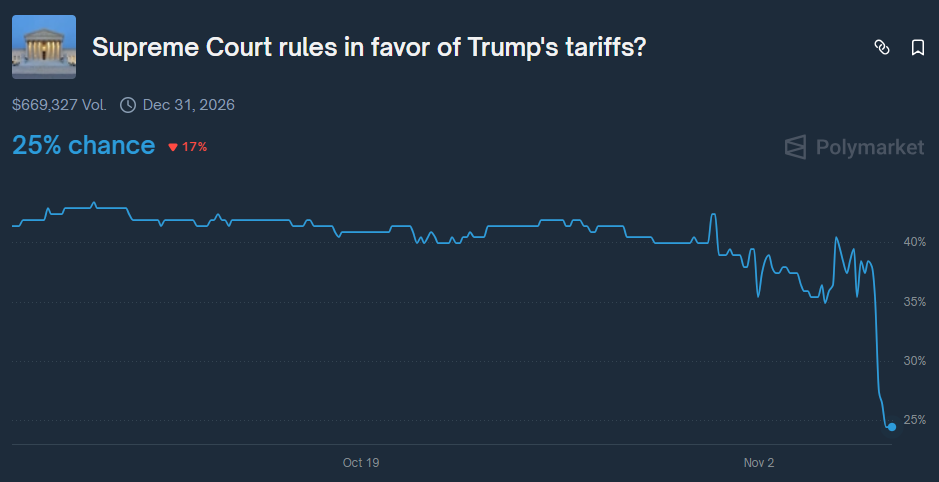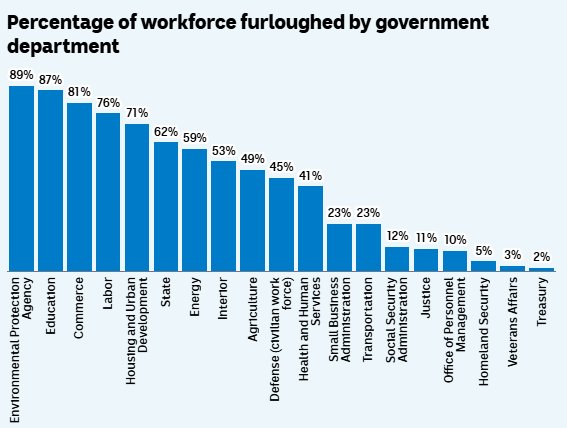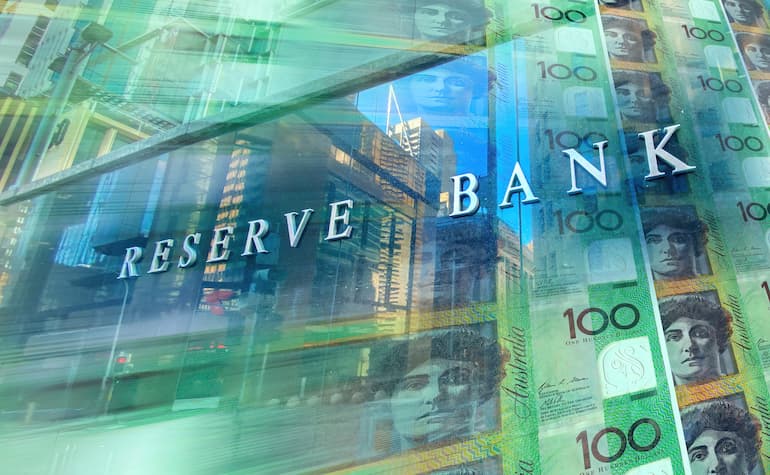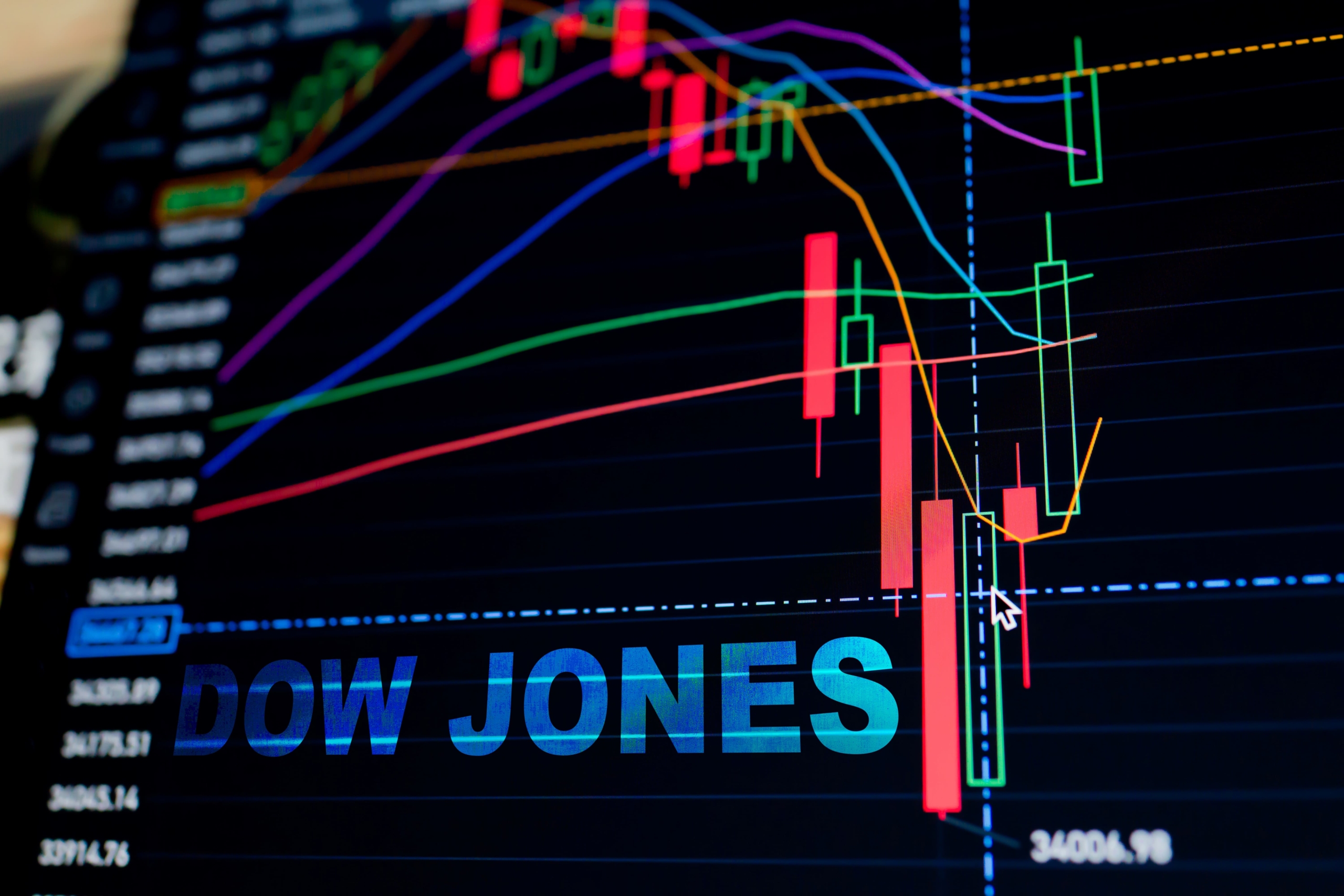Berita & analisis pasar
Tetap selangkah lebih maju di pasar dengan wawasan ahli, berita, dan analisis teknikal untuk memandu keputusan trading Anda.

Artificial intelligence stocks have begun to waver slightly, experiencing a selloff period in the first week of this month. The Nasdaq has fallen approximately 2%, wiping out around $500 billion in market value from top technology companies.

Palantir Technologies dropped nearly 8% despite beating Wall Street estimates and issuing strong guidance, highlighting growing investor concerns about stretched valuations in the AI sector.
Nvidia shares also fell roughly 4%, while the broader selloff extended to Asian markets, which experienced some of their sharpest declines since April.
Wall Street executives, including Morgan Stanley CEO Ted Pick and Goldman Sachs CEO David Solomon, warned of potential 10-20% drawdowns in equity markets over the coming year.
And Michael Burry, famous for predicting the 2008 housing crisis, recently revealed his $1.1 billion bet against both Nvidia and Palantir, further pushing the narrative that the AI rally may be overextended.
As we near 2026, the sentiment around AI is seemingly starting to shift, with investors beginning to seek evidence of tangible returns on the massive investments flowing into AI, rather than simply betting on future potential.
However, despite the recent turbulence, many are simply characterising this pullback as "healthy" profit-taking rather than a fundamental reassessment of AI's value.
Supreme Court Raises Doubts About Trump’s Tariffs
The US Supreme Court heard arguments overnight on the legality of President Donald Trump's "liberation day" tariffs, with judges from both sides of the political spectrum expressing scepticism about the presidential authority being claimed.
Trump has relied on a 1970s-era emergency law, the International Emergency Economic Powers Act (IEEPA), to impose sweeping tariffs on goods imported into the US.
At the centre of the case are two core questions: whether the IEEPA authorises these sweeping tariffs, and if so, whether Trump’s implementation is constitutional.
Chief Justice John Roberts and Justice Amy Coney Barrett indicated they may be inclined to strike down or curb the majority of the tariffs, while Justice Brett Kavanaugh questioned why no president before Trump had used this authority.
Prediction markets saw the probability of the court upholding the tariffs drop from 40% to 25% after the hearing.

The US government has collected $151 billion from customs duties in the second half of 2025 alone, a nearly 300% increase over the same period in 2024.
Should the court rule against the tariffs, potential refunds could reach approximately $100 billion.
The court has not indicated a date on which it will issue its final ruling, though the Trump administration has requested an expedited decision.
Shutdown Becomes Longest in US History
The US government shutdown entered its 36th day today, officially becoming the longest in history. It surpasses the previous 35-day record set during Trump's first term from December 2018 to January 2019.
The Senate has failed 14 times to advance spending legislation, falling short of the 60-vote supermajority by five votes in the most recent vote.
So far, approximately 670,000 federal employees have been furloughed, and 730,000 are currently working without pay. Over 1.3 million active-duty military personnel and 750,000 National Guard and reserve personnel are also working unpaid.

SNAP food stamp benefits ran out of funding on November 1 — something 42 million Americans rely on weekly. However, the Trump administration has committed to partial payments to subsidise the benefits, though delivery could take several weeks.
Flight disruptions have affected 3.2 million passengers, with staffing shortages hitting more than half of the nation's 30 major airports. Nearly 80% of New York's air traffic controllers are absent.
From a market perspective, each week of shutdown reduces GDP by approximately 0.1%. The Congressional Budget Office estimates the total cost of the shutdown will be between $7 billion and $14 billion, with the higher figure assuming an eight-week duration.
Consumer spending could drop by $30 billion if the eight-week duration is reached, according to White House economists, with potential GDP impacts of up to 2 percentage points total.


After 10 hikes on the trot and what will no doubt be a relief for mortgage holders the RBA held the official cash rate at 3.60%. The rate decision was fully priced in by the futures markets, so no great surprise on the actual decision, it’s the accompanying statement where investors look for clues as to future RBA actions that will set the short to mid-term tone of the FX and Equity markets. The statement did leave the door open for further rate hikes with the line “further tightening of monetary policy may well be needed to ensure that inflation returns to target” indicating to the market to not take for granted that Australian rates have peaked just yet.
Though there was a subtle word change from the previous March statement which traders saw as a dovish sign. Tha March statement said “ will be needed” which has change to “ may well be needed” A small difference, but a huge clue in the arcane skill of deciphering Central Bank communications. The AUDUSD behaved fairly predictably, a knee jerk drop on the actual rate announcement, followed by a step retrace as the machines and humans took few seconds to decide whether the statement was hawkish or not, before deciding on the “not” and seeing the AUDUSD resume its downtrend.
The ASX 200 index saw a mirror reaction to the AUD with the difference being the initial spike was not retraced, showing that equity traders were happy with the RBA taking their foot off the accelerator, even if it just temporary. One thing to remember that the AUD normally trades as a proxy for global growth risk, ebbing and flowing on risk sentiment any moves from this decision could be short lived as other market forces take over.


World’s largest sporting goods company, Nike Inc. (NYSE:NKE) reported fiscal 2023 financial results for its third quarter after the closing bell in the US on Tuesday. Nike beat both revenue and earnings per share (EPS) estimates for the quarter ending February 28, 2023. Revenue reported at $12.4 billion (up by 14% year-over-year) vs. $11.482 billion estimate.
EPS reported at $0.79 per share (down by 9% year-over-year) vs. $0.555 per share expected. CEO commentary "NIKE’s strong results in the third quarter offer continued proof of the success of our Consumer Direct Acceleration strategy," said John Donahoe, CEO of the company said in a press release. "Fueled by compelling product innovation, deep relationships with consumers and a digital advantage that fuels brand momentum, our proven playbook allows us to navigate volatility as we create value and drive long-term growth," Donahoe concluded his statement to investors. Stock reaction The stock rose by 3.64% on Tuesday, trading at $125.50 a share.
Share price fell by around 2% in the after-hours. Stock performance 1 month: +3.72% 3 months: +21.70% Year-to-date: +7.35% 1 year: -5.62% Nike stock price targets Telsey Advisory Group: $138 Redburn Partners: $100 Barclays: $110 Morgan Stanley: $140 Oppenheimer: $150 RBC Capital: $145 Wells Fargo: $146 JP Morgan: $156 HSBC: $125 Nike is the 49 th largest company in the world with a market cap of $194.76 billion. You can trade Nike Inc. (NYSE:NKE) and many other stocks from the NYSE, NASDAQ, HKEX, ASX, LSE and DE with GO Markets as a Share CFD.
Sources: Nike, TradingView, MarketWatch, MetaTrader 5, Benzinga, CompaniesMarketCap


As the banking crisis subside slightly with the news of First Citizens bank’s acquisition of Silicon Valley Bank (SVB), the DXY has reversed from the 103.50 price area, resuming the previous downtrend and currently trades at 102.60. This move lower on the DXY has resulted in the major currencies reversing on the lost ground to gain briefly against the US dollar. The short-term directional bias of the NZDUSD is likely to be driven primarily by the volatility of the DXY as there are no major news events on the near-term horizon for the NZD, with the Reserve Bank of New Zealand (RBNZ) cash rate decision due on 5th April.
The interest rate in New Zealand is currently at 4.75% and the RBNZ had previously indicated that it expects rates to peak at 5.50%, highlighting the possibility for further rate increases at this upcoming meeting. Recent price action on the NZDUSD has seen price trading higher to form higher lows while the MACD oscillator creates progressive lower lows. This movement of price and the indicator has developed into a hidden bullish divergence, which signals further upside potential for the NZDUSD.
Furthermore, the price has also broken through the 0.62 round number level, turning the resistance to a support level. The immediate target level for this bullish divergence could be at the next round number resistance level of 0.63, which was the previous swing high, and beyond that the 0.64 resistance area, which was last tested in February 2023.


Lululemon athletica inc. (NASDAQ: LULU) announced Q4 and full-year earnings results on Wednesday. World’s second largest sporting goods company reported revenue of $2.772 billion for the quarter (up by 30% year-over-year or 33% on a constant currency basis) vs. $2.701 billion estimate. Earnings per share (EPS) also topped analyst expectations at $4.40 per share (up by 30.5% year-over-year) vs. $4.259 per share expected.
Full-year revenue reported at $8.1 billion (up by 30% vs. 2021), EPS at $10.07 per share. Lululemon expects revenue of $1.890 billion to $1.930 billion for Q1. EPS expected to be between $1.93 to $2.00 for the quarter.
CEO and CFO commentary "In the fourth quarter and full year 2022, we delivered strong results across the business driven by our innovative products, powerful guest experiences, and strategic market expansion. Our continued high level of performance is a reflection of the hard work and agility of our incredible teams and the deep connections they create with our guests and communities around the world. As we enter 2023, we look forward to another year of strong momentum across the globe and delivering on our Power of Three ×2 growth plan," Calvin McDonald, CEO of the company said in a press release.
Meghan Frank, CFO of Lululemon also commented on the latest results and delivering for its shareholders: "We are pleased with our performance in the fourth quarter, which remained balanced across product category, channel, and regions. Our ability to exceed our annual revenue target in a dynamic operating environment is a testament to the enduring strength of the lululemon brand. Looking ahead, we remain optimistic regarding our ability to deliver sustained growth and long-term value for all our stakeholders." The latest results had a positive impact on the stock price.
Shares were up by +12.72% at the end the trading session on Wednesday at $360.87 a share. Stock performance 1 month: +16.66% 3 months: +16.86% Year-to-date: +12.69% 1 year: -4.21% Lululemon price targets TD Cowen: $500 Baird: $425 B of A Securities: $410 BMO Capital: $340 Credit Suisse: $420 Stifel: $460 Wells Fargo: $425 Guggenheim: $440 Citigroup: $440 Telsey Advisory Group: $425 Keybanc: $390 Barclays: $368 JP Morgan: $430 Lululemon athletica inc. is the 358 th largest company in the world with a market cap of $46.03 billion, according to CompaniesMarketCap. You can trade Lululemon athletica inc. (NASDAQ: LULU) and many other stocks from the NYSE, NASDAQ, HKEX, ASX, LSE and DE with GO Markets as a Share CFD.
Sources: Lululemon athletica inc., TradingView, MarketWatch, MetaTrader 5, Benzinga, CompaniesMarketCap


JP Morgan Chase & Co. (NYSE: JPM) announced Q1 financial results before the market open in the US on Friday. The largest bank in the US beat both revenue and earnings per share (EPS) estimates for the first quarter of 2023, sending the stock price higher. The company reported revenue of $38.349 billion vs. forecast of $36.125 billion.
EPS reported at $4.10 per share vs. $3.414 per share expected. CEO commentary ''Our lines of business saw continued momentum in the quarter. In Consumer & Community Banking, consumer spending remained healthy with combined debit and credit card sales up 10% and card loans up 21%.
In the Corporate & Investment Bank, Markets revenue fell 4% versus a very strong prior year, and we focused on supporting clients as they navigated volatile market conditions. Global Investment Banking fees remained challenged for the industry, although we significantly outperformed the overall wallet. In Commercial Banking, we earned record revenue, with exceptionally strong Payments revenue, up 98%.
Finally, Asset & Wealth Management performed well with strong long-term inflows of $47 billion across products,'' JP Morgan’s CEO, Jamie Dimon commented on the latest results. Dimon also touched on the state of the US and global economy: ''The U.S. economy continues to be on generally healthy footings —consumers are still spending and have strong balance sheets, and businesses are in good shape. However, the storm clouds that we have been monitoring for the past year remain on the horizon, and the banking industry turmoil adds to these risks.
The banking situation is distinct from 2008 as it has involved far fewer financial players and fewer issues that need to be resolved, but financial conditions will likely tighten as lenders become more conservative, and we do not know if this will slow consumer spending. We also continue to monitor for potentially higher inflation for longer (and thus higher interest rates), the inflationary impact of continued fiscal stimulus, the unprecedented quantitative tightening, and geopolitical tensions including relations with China and the unpredictable war in Ukraine. While we hope these clouds will dissipate, the Firm is prepared for a broad range of outcomes, and we are confident that we can serve the needs of our customers and clients in all environments.'' ''Finally, I want to recognize our outstanding employees across the globe.
Thanks to their efforts, we extended credit and raised $588 billion in capital in the quarter for small and large businesses, governments, and U.S. consumers, as well as efficiently onboarded a significant amount of new clients across many of our businesses,'' Dimon concluded. The stock rose after beating Wall Street expectations. Shares were up by 7.55% at the end of the trading day on Friday at $138.71 a share.
Stock performance 1 month: +10.27% 3 months: -2.99% Year-to-date: +3.45% 1 year: +10.00% JP Morgan Chase & Co. price targets Barclays: $179 Evercore ISI Group: $146 Morgan Stanley: $153 RBC Capital: $132 Oppenheimer: $157 Wells Fargo: $155 Morgan Stanley: $173 Piper Sandler: $157 Deutsche Bank: $145 Barclays: $189 JP Morgan Chase & Co. is the 17 th largest company in the world with a market cap of $406.68 billion, according to CompaniesMarketCap. You can trade JP Morgan Chase & Co. (NYSE: JPM) and many other stocks from the NYSE, NASDAQ, HKEX, ASX, LSE and DE with GO Markets as a Share CFD. Sources: JP Morgan Chase & Co., TradingView, MarketWatch, MetaTrader 5, Benzinga, CompaniesMarketCap


Index trading is one of the most popular class of markets to trade for CFD traders, rivalling major FX pairs in trading volume, but what is indices trading and how does trading them with CFDs work? Most people will be familiar with the names of the major stock indices from financial reports in all forms of media, the most popular stock indices of CFD traders and the stocks they track are below: USA The Dow Jones Industrial average - 30 largest blue-chip companies in the US NASDAQ Composite Index – Top 100 largest non-financial companies in the US (Mostly Tech) S&P 500 Index - 500 large cap companies in the US (Bank heavy) Europe and UK FTSE 100 – Top 100 UK companies CAC 40 – Top 40 French companies DAX 40 – Top 40 German companies (Formerly known as the DAX30 which it may still be labelled as) Asia and Australia ASX 200 – Top 200 Australian companies Hang Seng - A selection of the largest companies in Hong Kong. Nikkei 225 - Consists of 225 stocks in the Prime Market of the Tokyo Stock Exchange Some of the advantages of trading indices: You can take a broad view of the health (or not) of that countries stock market, i.e. rather than take a position in a single stock, take a position in a basket of stocks by buying or selling the index they are components of.
Higher leverage available to trade stock indices, up to 100:1 for qualified Pro clients. Extended trading hours, you can take positions in most indices up to 23 hours a day, far greater hours than the underlying stock exchanges. Take positions long or short with ease to profit from both a rising and falling market.
When you take a Long (Buy) position you profit if the market moves up, a Short (Sell) position will profit when the market moves down. How Indices are priced and understanding your position size Stock Indices are priced in the native currency i.e., the Dow Jones (WS30 on the GO Markets platform) is priced in USD, the FTSE100 in GBP, the ASX200 in AUD etc. This is important to keep in mind when choosing your position size, it also important to know the specifications of the contract you are trading is to make sure you understand the lot sizing before entering a trade.
You can check the specifications of any contract on MT4 and MT5 by right clicking it in the Market Watch Window and selecting “Specification” An example specification of the Dow (WS30) is below (MT4 specs, MT5 is very similar): You can see in the example above that the WS30 contract with GO Markets has a contract size of 1, this means 1 lot will equal $1 USD per point movement in PnL if you take a position. e.g., if you buy 1 lot at a price of 33670 and the price rises to 33680 you are in profit by 10 points, which would equal $10 USD Most indices will have a contract size of 1, though it is advisable to always check as some may have different values, an example in the S&P 500 (US500) which has a contract size of 10. It is important to understand the contract size and base currency of the index you are trading before entering a trade to avoid any nasty surprises. Main drivers of what moves an Index’s price.
In choosing which Index to trade it is also important to understand the drivers of that index and it’s component stocks. All Indexes will have some common drivers, such as global growth concerns, geopolitical events and non-US indices will be affected (fairly or not) by what US markets are doing. Each index will also have its own individual drivers as well though.
Examples The NASDAQ (NDX100) is heavily weighted with mega cap tech stocks, the health of the Tech sector will heavily influence its price. The ASX200 and FTSE100 both have large contingents of miners, meaning commodity prices will be big drivers of these 2 indexes, more so the ASX200. The Russell 2000 has many regional and mid-size banks as its component stocks, which is why during the recent banking crisis it underperformed other US indices.
Understanding these unique drivers for each Index is recommended to make the best trading decisions possible. In Summary, trading Indices opens up some great opportunities to position yourself to profit from market moves, spreads on Indices with GO Markets are some of the best in the CFD industry, with tight spreads in and out of hours( Some brokers will artificially increase spreads on Indices outside the stock market hours of that country) They allow you to seamlessly take long or short positions to speculate for profit, or to headge existing stock positions from an overnight move. You can click the link below to learn more about Index trading with GO Markets. https://www.gomarkets.com/au/index-trading-cfds/

